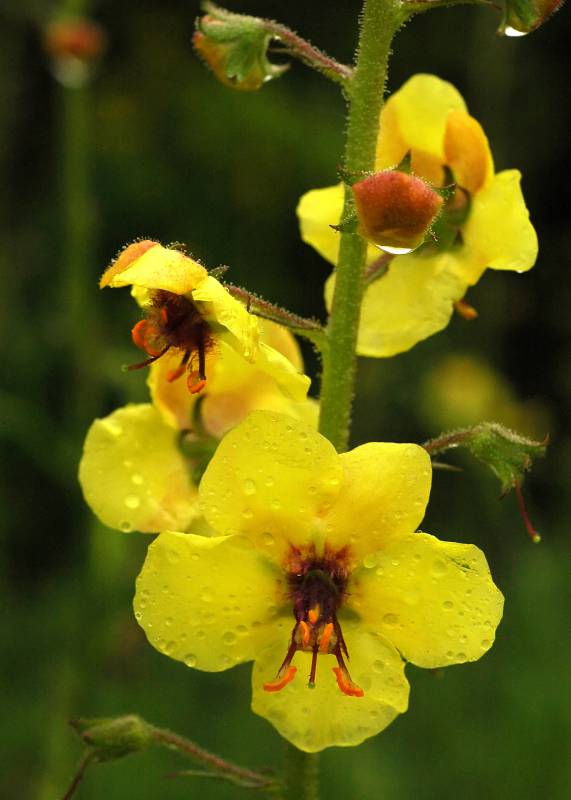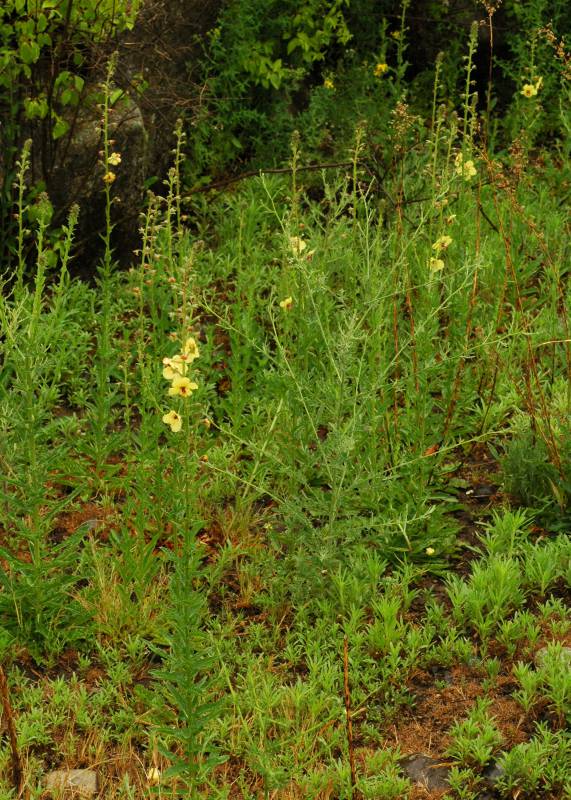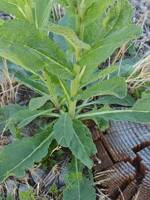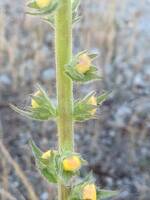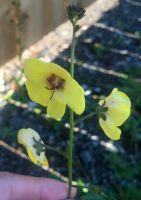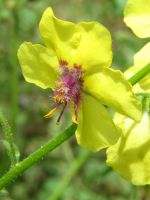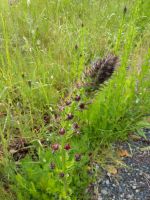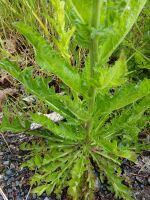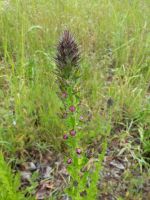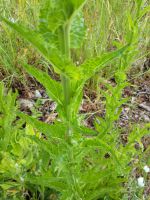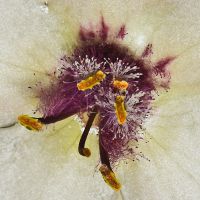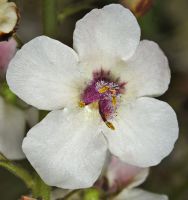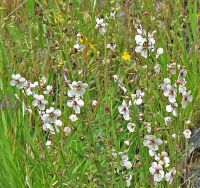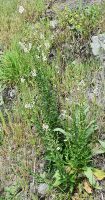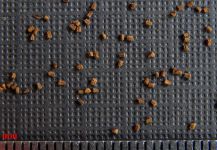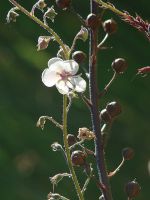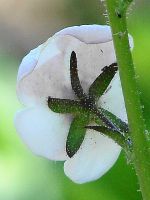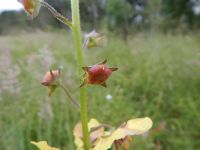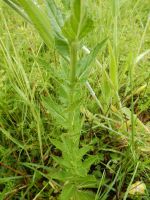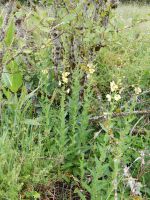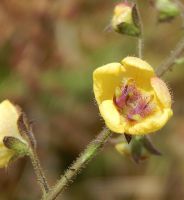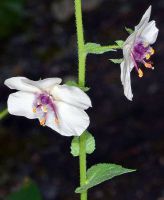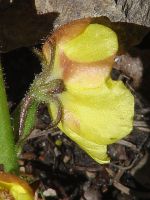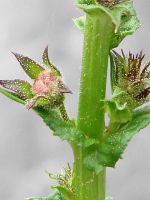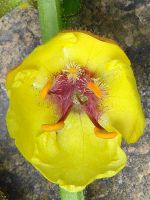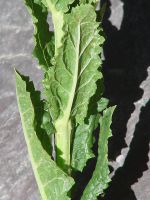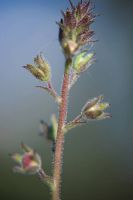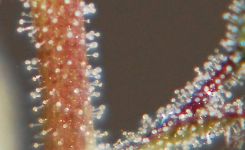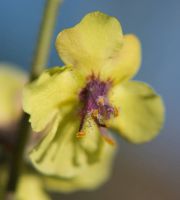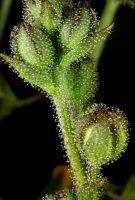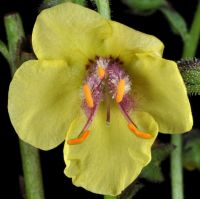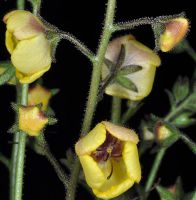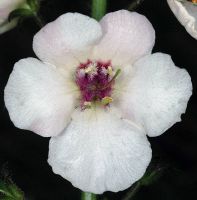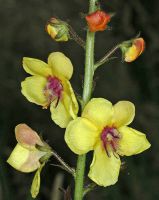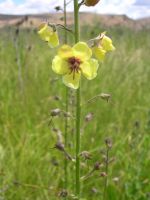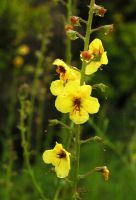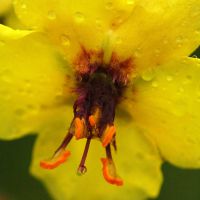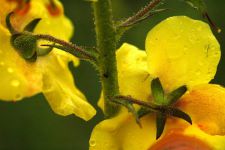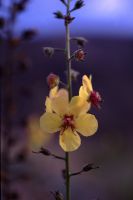Distribution: Occurring on both sides of the Cascades crest in Washington; British Columbia to California, east to the Atlantic Coast.
Habitat: Roadsides, fields, ditches, meadows, wastelots, and other disturbed open areas, often where dry.
Flowers: May-September
Origin: Introduced from Eurasia
Growth Duration: Biennial
Conservation Status: Not of concern
Pollination: Bumblebees, bees
Taprooted biennial, producing a rosette of basal leaves the first year, and the second year a single, upright stem 4-15 dm. tall, which is glabrous below and with stalked glands in the inflorescence.
Basal leaves broadly oblanceolate, 5-15 cm. long and 1-3 cm. wide, tapering to a short petiole, toothed and often lobed; cauline leaves alternate, numerous, reduced upward, becoming sessile and clasping, toothed but not lobed.
Inflorescence an open, elongate raceme; pedicels 8-15 mm. long, much surpassing the lanceolate bracts; calyx of 5 sepals; corolla yellow or white, 2-3 cm. long, slightly irregular, 5-lobed; stamens 5, all fertile, the filaments covered with purple-knobbed hairs.
Capsule ovoid-globose, 6-8 mm. high.
Publication: Sp. Pl. 1: 178. 1753.
PNW Herbaria: Specimen records of Verbascum blattaria in the Consortium of Pacific Northwest Herbaria database.
WA Flora Checklist: Verbascum blattaria checklist entry.
OregonFlora: Verbascum blattaria information.
E-Flora BC: Verbascum blattaria atlas page.
CalPhotos: Verbascum blattaria photos.
USDA Plants: Verbascum blattaria information.

